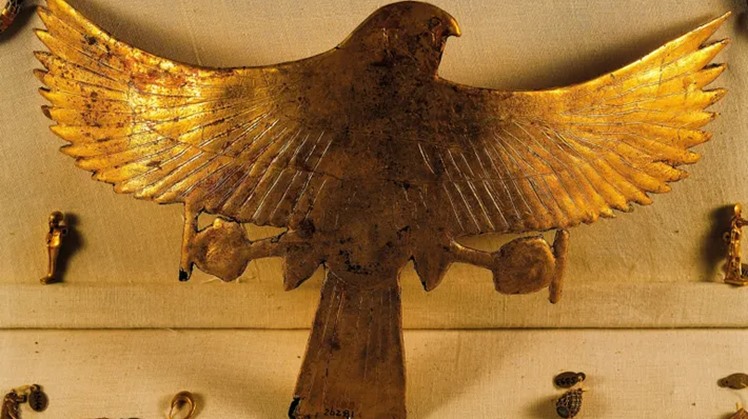Howard Carter's dramatic discovery in 1922 of the treasure-filled tomb of King Tutankhamun sparked a worldwide fascination with the antiquities of the ancient Egyptians. 1925, Reisner's photographer, Muhammadani Ibrahim, was working near the Great Pyramid, which was erected by Pharaoh Khufu in the middle of the third millennium B.C. When Muhammadani Ibrahim looked down he noticed a white layer of plaster and that there was a temple hiding under it.
Reisner had to be informed but there was one problem: Reisner was at that moment in Boston, according to National Geographic, performing his duties as a professor of Egyptology at Harvard University while his team began digging in his absence and found a fissure that had gone down 85 feet. They discovered a grave.
On Saturday, March 7, while Reisner attended his Monday morning lecture, his team finally excavated a single block of stone to reveal a large antique chamber and it was possible to see a stone sarcophagus and staves or wands with gilded tops.
For the team that was their moment of victory, but later that week Reisner sent a telegram from Boston ordering a halt to work in Egypt until he personally supervised it in Egypt.
Born in 1867 in Indianapolis, George Reisner was highly respected in Egyptology circles, having conducted a major archaeological survey of Nubia in 1902.
Leaks from Reisner's team, which allowed an American news photographer to take pictures, led to the disclosure in the London press of a major new discovery. Speculation spread that the discovered tomb belonged to the fourth dynasty pharaoh Sneferu, while Reisner responded by confirming his belief that it belonged to a royal woman.
In January 1926, upon finally entering the room containing the sarcophagus, Reisner discovered that the gold-covered furniture inside had been water-damaged and in such poor condition that he feared it would collapse. The meticulous work of restoring the inlay was laborious.
In addition to a canopy and a bed, an armchair, an elaborate lamb chair, and an inscription on the lamb’s chair were found inside the room. Reisner’s idea was confirmed that the tomb belonged to a woman who was Hetep, the guard of the mother of Khufu, the second king of the Fourth Dynasty, and the builder of the Great Pyramid. Her tomb was hidden in the shadow of this monument for more than Four thousand years.
Hetephares' sarcophagus was opened in March 1927 but did not contain human remains. Reisner suggested that Hetepheres was originally buried near her husband Sneferu in Dahshur and then Khufu established the new burial site at Giza, but his mother's remains were never moved there while others suggested that she was buried in The Small Pyramid at the foot of the Great Pyramid.
After excavations the armchair was restored and is now on display in the Egyptian Museum in Cairo, and after Reisner's death in 1942, a renewed interest in recovered parts from the tomb spurred the monumental task of rebuilding the elaborate Lamb's Chair, in all its splendor and today in the Harvard M
 Sun, Apr. 3, 2022
Sun, Apr. 3, 2022